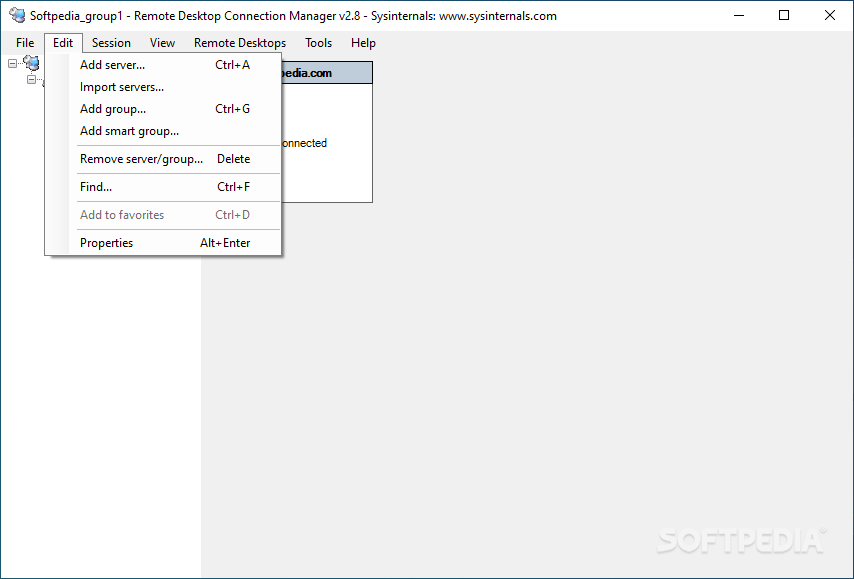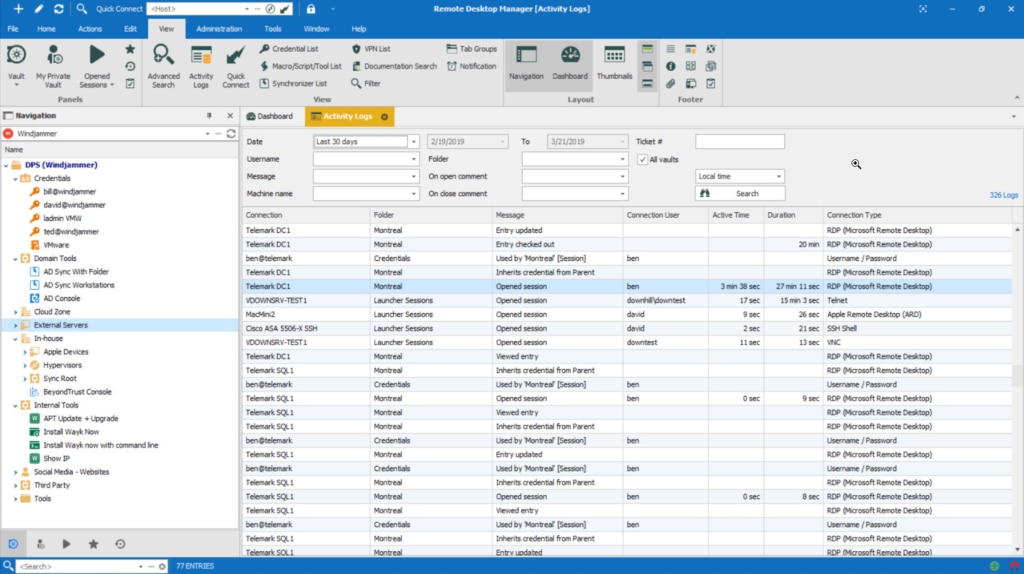
Also, servers can inherit their logon settings from the group, thus maximizing your efficiency and work, without specifying server settings each time you need to create a new remote connection.īy default, all the passwords are encrypted and stored locally in a specific location, so each time you move a server between groups, you can be rest assured that all the previous configurations will not change.Īlthough there are plenty of apps on the market that provide you with the same features as Remote Desktop Connection Manager, the aspect that makes this utility to stand out is the multiple groups and sessions that can be created within a single interface.Īnother downside to Remote Desktop Connection Manager, it’s the fact that it has limited support for managing remote sessions other than those connected from it. Worth mentioning is that you can view all the servers in a group as a set of thumbnails, so you can find them easily. You have the possibility to specify details such as server settings, logon credentials, gateway and connection options, as well as to set local resources such as sound quality, remote sound and color depth to obtain a better preview. After assigning it a personalized name, you can easily add as many servers as you need. More important is that this utility allows you to organize all the server labs, so each time you need to remotely connect to a specific computer, all the connection details are saved in the main window of the application.īefore using Remote Desktop Connection Manager, you need to create a new group. Not sure if its even appropriate -will remove if so. But I see everyone on this platform as real astute IT professionals. Does anyone have any tips for me- a recent accounting/compsci grad with little-to-no I.Remote Desktop Connection Manager (RDCMan) is a comprehensive and practical application worth having when you need to manage and organize multiple remote connections.īy using this application, you have the possibility to consolidate multiple remote connections into a single and intuitive window, so you can prevent desktop clutter.

Hello, A slightly weird question to be asking.
Microsoft remote desktop manager 2.2 how to#
Working in IT and being autistic User Groupĭon't know how to start so I'll just spit it out.Use the following Regular Expression in the Find field and then leave the replace field blank: After removing the LogonCredentials pieces inheritance was automatically enabled for that server/group. I was able to use Find and Replace using a regular expression that removed * including the dynamic content between the tags. I realized that the RDG files are just XML files that I could open in Notepad++ and edit the contents. But I did figure out a way to strip the saved credentials out in just a few seconds using Notepad++. I never figured out a way to force changes to child objects that had inheritance disabled. So any changes at the top level wouldn't propagate through the list. In my situation the server list had many groups and servers where inheritance was turned off.

A Google search advised me to simply re-enter the credentials at the top level and they should propagate down through the server list. This is because their credentials were still saved but couldn't be decrypted.

However each time I opened the server list I received an error regarding the inability to decrypt credentials. Having them send me their server list was a huge time saver. There were dozens of groups and hundreds of servers. I recently switched jobs and one my new coworkers sent me their server list as an RDG file. It's a great tool that provides IT Professionals the ability to manage numerous RDP sessions within a single interface. Many of us use the Remote Desktop Connection Manager to manage our RDP sessions.


 0 kommentar(er)
0 kommentar(er)
